
SS Yongala was a passenger steamship that was built in England in 1903 for the Adelaide Steamship Company. She sank in a cyclone off the coast of Queensland in 1911, with the loss of all 122 passengers and crew aboard.

SS Newfoundland was a wooden-hulled brigantine and steamship that was built in 1872 and wrecked in 1916. She was a cargo ship, and for part of her career she was a sealing ship. In 1916 she was renamed Samuel Blandford.
SS Virawa was British India Steam Navigation Company (BI) steamship. She was launched in Scotland in 1890 and scrapped in India in 1921. Her trades included taking horses from Australia to India, and indentured labourers from India to Fiji and Trinidad. In 1899 she was a troop ship in the Second Boer War.
SS Wardha was a merchant steamship that was built in Scotland in the 1880s and scrapped in Italy in 1923. She was one of a pair of sister ships that were designed to carry cotton, but completed for the British India Steam Navigation Company (BI) to carry sugar. In 1899 she carried troops and cavalry horses for the Second Boer War. In the 1900s she took Indian indentured labourers to British Guiana and Fiji. From 1913 onward she passed through a succession of Italian owners, but kept her original name.
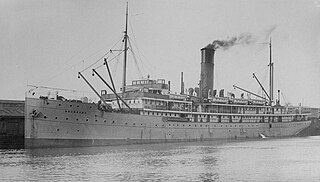
SS Koombana was a passenger steamship that was built in Scotland in 1908 for the Adelaide Steamship Company, for coastal liner services between Fremantle and the northwest coast of Western Australia. She sank in a tropical cyclone somewhere off Port Hedland in 1912, with the loss of all 150 people aboard. Her loss was one of Australia's worst weather-related maritime disasters in the twentieth century.

Loch Vennachar was an iron-hulled, three-masted clipper ship that was built in Scotland in 1875 and lost with all hands off the coast of South Australia in 1905. She spent her entire career with the Glasgow Shipping Company, trading between Britain and Australia. The company was familiarly called the "Loch Line", as all of its ships were named after Scottish lochs. The ship was named after Loch Venachar, in what was then Perthshire.
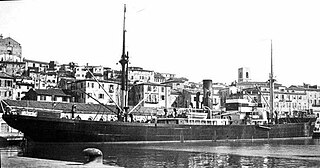
SS Georgia was a passenger and cargo ship that was launched in Germany in 1891 as Pickhuben. The Hamburg America Line acquired her in 1892, and renamed her Georgia in 1895. In 1915 a US company bought her and renamed her Housatonic.
SS Montrose was a British merchant steamship that was built in 1897 and wrecked in 1914. She was built as a cargo liner for Elder, Dempster & Company. In 1903 the Canadian Pacific Railway bought her and had her converted into a passenger liner.

SS Iron Crown was an Australian cargo steamship that was built in 1922 for the Commonwealth Line as Euroa, named after the town of Euroa in the state of Victoria. Broken Hill Propriatary (BHP) acquired her in 1923, renamed her Iron Crown, and used her as an iron ore carrier. A Japanese submarine sank her in World War II.

SS Themistocles was a UK steam ocean liner and refrigerated cargo ship. She was launched in 1910 in Ireland and scrapped in 1947 in Scotland. She was built for Aberdeen Line, White Star Line managed her for a few years, and she spent the latter part of her career with Shaw, Savill & Albion Line.
SS Hertford was a refrigerated cargo steamship that was launched in Germany in 1917, seized by the United Kingdom in 1920 as World War I reparations, and sunk by a U-boat in 1942 with the loss of four members of her crew.
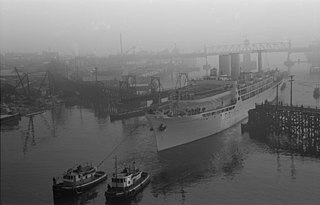
HMS Menestheus was originally the Blue Funnel Line refrigerated cargo ship Menestheus. She was built in 1929, and traded between the UK and the Far East. She was an auxiliary minelayer from 1940 to 1943. In 1945, during the Second World War, she was converted into an amenities ship. She was scrapped in 1953 after being gutted by fire.

SS City of Bradford was a British passenger and cargo steamship that was built in Yorkshire in 1903, renamed Donau in 1916, reverted to City of Bradford in 1919 and became Hanne in 1936.

SS Katoomba was a passenger steamship that was built in Ireland 1913, spent most of her career in Australian ownership and was scrapped in Japan in 1959. McIlwraith, McEacharn & Co owned her for more than three decades, including two periods when she was a troopship. In 1946 the Goulandris brothers bought her for their Greek Line and registered her in Panama. In 1949 she was renamed Columbia.
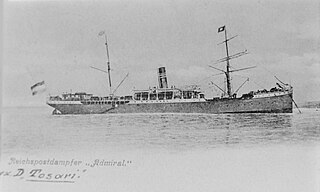
Rosalind was a steam cargo liner that was launched in England in 1890 for Dampfschiffs Rhederei zu Hamburg as Tosari. In 1891 Deutsche Ost-Afrika Linie (DOAL) bought her and renamed her Admiral. In 1902 the Bowring Brothers' New York, Newfoundland & Halifax Steamship Company bought her and renamed her Rosalind. In 1912 the St Laurence Shipping Company bought her and renamed her City of Sydney. She was wrecked off the coast of Nova Scotia in 1914.

RMS Orama was a British steam ocean liner and Royal Mail Ship. She was launched in 1911 for the Orient Steam Navigation Company. When new, she was the largest liner sailing between Great Britain and Australia.
SS Warora was a merchant steamship that was built in Scotland in the 1880s and scrapped in India in 1911. She was one of a pair of sister ships that were designed for a Liverpool shipping company to carry cotton, but completed for the British India Steam Navigation Company (BI) to carry sugar. In 1899 she carried troops and cavalry horses for the Second Boer War. She was a troop ship again in the Boxer Rebellion.

SS Corcovado was a cargo liner that was launched in Germany in 1907 for the Hamburg America Line (HAPAG). In 1917 she was transferred to the Ottoman government and renamed Sueh. In 1919 the Ottomans surrendered her to France, and her name reverted to Corcovado. In 1920 the Società Sicula Americana bought her and renamed her Guglielmo Peirce. In 1927 Lloyd Sabaudo bought her and renamed her Maria Cristina. In 1930 the Companhia Colonial de Navegação (CCN) bought her and renamed her Mouzinho. She was scrapped in Italy in 1954.

SS Willehad was a passenger and cargo steamship that was built in Germany in 1894 for Norddeutscher Lloyd (NDL). For her first few years she took emigrants from Bremen to the United States. In 1900 she made one round trip between Bremen and Australia via the Suez Canal. Between 1901 and 1903 her route was between Bremen and South America. For a few months in 1904 she sailed between Stettin in Germany and New York. From the end of 1904 to the beginning of 1907 she was a mail ship between Japan and Australia. From 1911 until 1914 she ran transatlantic services between Hamburg and the United States, and also between Hamburg and Canada.
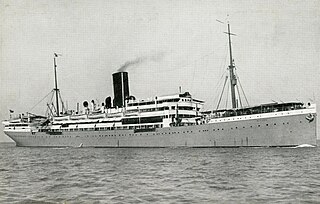
SS Nyassa was a steam ocean liner that was launched in Germany in 1906 as Bülow for Norddeutscher Lloyd (NDL). In 1916 Portugal seized her, renamed her Trás-os-Montes, and placed her under the management of Transportes Marítimos do Estado (TME). In 1924 Companhia Nacional de Navegação (CNN) bought her and renamed her Nyassa. After a long career with CNN she was scrapped in England in 1951.


















